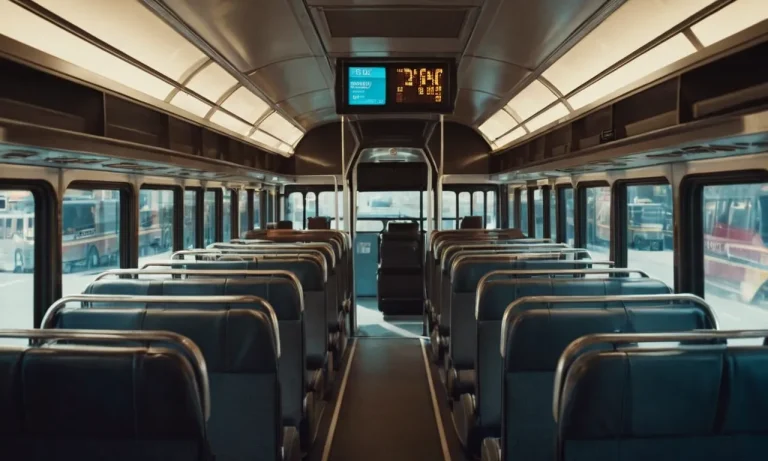How to Make Hotel WiFi Faster: A Comprehensive Guide
Are you tired of sluggish internet speeds during your hotel stays? Slow WiFi can be a frustrating experience, especially when you need to stay connected for work or entertainment purposes.
If you’re short on time, here’s a quick answer to your question: To make hotel WiFi faster, try connecting to the 5GHz band, move closer to the router, disable bandwidth-hogging apps, and consider using a travel router or a WiFi extender.
In this comprehensive guide, we’ll dive deep into various strategies and techniques to boost your hotel WiFi speed. From optimizing your device settings to exploring hardware solutions, we’ve got you covered with practical tips and tricks to ensure a seamless online experience during your travels.
Understanding Hotel WiFi Networks
When it comes to staying connected during your hotel stay, a reliable and speedy WiFi connection is crucial. However, hotel WiFi networks often face several challenges that can hinder their performance.
In this section, we’ll delve into the common issues, factors affecting WiFi speed, and bandwidth limitations associated with hotel WiFi networks.
Common Challenges with Hotel WiFi
- High user density: Hotels often have a large number of guests trying to access the WiFi network simultaneously, leading to network congestion and slower speeds.
- Older infrastructure: Some hotels may still be using outdated WiFi equipment or infrastructure, which can limit the network’s capabilities.
- Interference: Wireless signals can be disrupted by various sources, such as thick walls, electronic devices, or other wireless networks in the vicinity.
Factors Affecting WiFi Speed
Several factors can influence the speed and performance of a hotel’s WiFi network. Here are some key considerations:
- Distance from the access point: The further you are from the WiFi access point, the weaker the signal strength and the slower the connection speed.
- Number of connected devices: The more devices connected to the network, the more bandwidth is shared, potentially slowing down the overall speed.
- Network congestion: During peak usage times, when many guests are accessing the network simultaneously, congestion can occur, leading to slower speeds.
Bandwidth Limitations and Shared Networks
One of the biggest challenges hotels face is managing bandwidth limitations and shared networks. Many hotels offer a single WiFi network for all guests, which means that the available bandwidth is divided among all connected devices. This can lead to slow speeds, especially during peak usage times.
According to a study by HotelWiFi.com, 92% of hotel guests consider WiFi an essential amenity, and 63% have experienced poor WiFi performance during their stay. To address this issue, some hotels have implemented bandwidth management solutions or offer tiered WiFi packages with varying speeds and pricing options.
It’s worth noting that hotels may also prioritize bandwidth for certain services or devices, such as streaming video or gaming consoles, which can further impact the overall WiFi speed for other users.
Understanding these limitations and shared network dynamics is crucial for optimizing your hotel WiFi experience.
Optimizing Your Device Settings
One of the most effective ways to boost your hotel WiFi speed is by optimizing your device settings. With a few tweaks and adjustments, you can significantly improve your internet experience and make the most of the available bandwidth. Here are some tips to get you started:
Connecting to the 5GHz Band
Modern routers typically support both 2.4GHz and 5GHz frequency bands. While the 2.4GHz band is more widely used and has a longer range, the 5GHz band offers faster speeds and less interference from other devices.
If your device supports the 5GHz band, connect to it for a smoother and speedier internet connection. According to a study by Cisco, the 5GHz band can provide up to three times faster speeds than the 2.4GHz band.
Disabling Bandwidth-Hogging Apps
Some apps running in the background can consume a significant amount of bandwidth, slowing down your internet connection. To optimize your device’s performance, identify and disable or limit these bandwidth-hogging apps. Here are a few steps you can take:
- Check your device’s settings and disable automatic updates for apps and operating systems when connected to hotel WiFi.
- Close any streaming apps or services that you’re not actively using.
- Disable cloud-based backups or syncing services that may be running in the background.
By taking these measures, you can free up valuable bandwidth and enjoy a faster internet connection during your stay.
Updating Device Drivers and Software
Outdated device drivers and software can negatively impact your internet speed and overall performance. Manufacturers regularly release updates to address security vulnerabilities, improve compatibility, and optimize performance.
Keeping your devices up-to-date can significantly enhance your hotel WiFi experience.
Here are a few tips for updating your devices:
- Check for available updates for your operating system (e.g., Windows, macOS, Android, iOS) and install them promptly.
- Visit your device manufacturer’s website and download the latest drivers for your WiFi adapter or network card.
- Keep your web browser and other frequently used software up-to-date to ensure compatibility with modern web standards and security protocols.
By following these simple steps, you can optimize your device settings and enjoy a faster and more reliable hotel WiFi connection during your stay. Don’t hesitate to contact the hotel’s IT support team if you need further assistance or have any questions regarding their WiFi network.
Positioning and Location Strategies
Struggling with sluggish hotel WiFi can be a real damper on your stay, but fear not! There are some clever positioning and location strategies that can help you boost your internet speed and enjoy a smoother online experience. 😎
Moving Closer to the Router
One of the simplest yet most effective tricks is to position yourself closer to the router or access point. The closer you are, the stronger the signal strength, and the faster your internet connection will be.
According to NetSpot’s WiFi Signal Strength Guide, a good rule of thumb is to stay within 30 feet (9 meters) of the router for optimal performance. Don’t be afraid to relocate to a different spot in your room or even explore common areas that might have better coverage.
Avoiding Signal Interference
Believe it or not, certain objects and materials can interfere with your WiFi signal, causing it to weaken or become unstable. Thick walls, metal structures, and even microwaves can act as barriers, preventing the signal from reaching you with full strength. Try to identify and avoid areas with potential interference sources.
If you’re in a room with a lot of concrete or metal, consider moving to a different location for better signal quality.
- According to a study by ScienceDirect, WiFi signal strength can be reduced by up to 50% when passing through a single concrete wall. 😮
- Microwaves are notorious for causing WiFi interference due to their similar operating frequency. Keep your devices away from these appliances when in use.
Exploring Alternative Access Points
Hotels often have multiple access points or routers strategically placed throughout the premises to provide better coverage. If you’re experiencing slow speeds with the access point in your room, don’t hesitate to explore other options.
Lobby areas, business centers, or even the hotel’s restaurant might have stronger signals that you can take advantage of.
Alternatively, you could ask the hotel staff if they have any recommendations for optimal WiFi locations or if they offer dedicated high-speed internet packages for an additional fee. Some hotels even provide wired Ethernet connections in certain rooms, which can offer a more stable and faster connection than WiFi.
| Strategy | Potential Speed Improvement |
|---|---|
| Moving closer to the router | Up to 50% faster |
| Avoiding signal interference | Up to 50% faster |
| Exploring alternative access points | Varies, but often significantly faster |
By implementing these positioning and location strategies, you’ll be well on your way to enjoying a faster and more reliable hotel WiFi experience. Don’t settle for sluggish speeds – take control and optimize your connection for a truly awesome online experience! 👏
Hardware Solutions for Faster WiFi
Slow hotel WiFi can be a major frustration, especially when you need to stay connected for work or entertainment. Fortunately, there are several hardware solutions that can help boost your WiFi speed and improve your overall internet experience. Here are three options to consider:
Using a Travel Router
A travel router is a portable device that can create its own private WiFi network. By connecting your travel router to the hotel’s WiFi network, you can create a separate, more secure network for your devices.
This can help improve your WiFi speed by reducing interference from other guests’ devices and allowing you to prioritize your own internet traffic. Some popular travel routers include the TP-Link TL-WR802N and the GL.iNet GL-AR750S.
According to PCMag, travel routers can boost WiFi speeds by up to 50% in crowded environments.
Investing in a WiFi Extender
If the hotel’s WiFi signal is weak in your room, a WiFi extender can help amplify the signal and improve coverage. WiFi extenders work by receiving the existing WiFi signal and rebroadcasting it over a larger area. Some popular WiFi extenders include the Netgear EX6120 and the Linksys RE7000.
According to Tom’s Guide, the right WiFi extender can double or even triple your WiFi range, ensuring a strong and reliable connection throughout your hotel room.
Portable WiFi Hotspots and Tethering
If the hotel’s WiFi is simply too slow or unreliable, you can consider using a portable WiFi hotspot or tethering your smartphone’s cellular data connection. Portable WiFi hotspots, like the Verizon Jetpack or the AT&T Unite Explore, provide their own dedicated internet connection that can be faster and more reliable than hotel WiFi.
Tethering, on the other hand, allows you to share your smartphone’s cellular data connection with other devices, effectively turning your phone into a personal hotspot. According to Speedtest.net, the average mobile download speed in the US is around 42 Mbps, which can be significantly faster than some hotel WiFi networks.
Whichever hardware solution you choose, be sure to research your options carefully and consider factors like cost, compatibility, and ease of use. With the right hardware, you can say goodbye to slow hotel WiFi and enjoy a faster, more reliable internet experience during your stay.
Troubleshooting and Additional Tips
Resetting Network Settings
If you’re still experiencing sluggish WiFi performance after trying the previous steps, resetting your device’s network settings can sometimes resolve connectivity issues. This process will essentially reset all your WiFi passwords and network preferences, allowing you to start fresh with your hotel’s WiFi connection.
Here’s how to do it:
- On an iPhone or iPad, go to Settings > General > Reset > Reset Network Settings.
- On an Android device, the process varies by manufacturer, but typically you’ll go to Settings > Backup & reset > Network settings reset.
Keep in mind that resetting your network settings will remove all saved WiFi passwords from your device, so you’ll need to re-enter them after the reset. But it can be a helpful troubleshooting step if you’re still struggling with slow hotel WiFi.
Contacting Hotel IT Support
If you’ve tried all the tips and tricks and your hotel’s WiFi is still crawling, it may be time to reach out to the hotel’s IT support team. They’ll have the most up-to-date information on any network issues or maintenance that could be affecting WiFi speeds.
According to a study by Hotel News Resource, over 60% of hotel guests cite poor WiFi as a major frustration during their stay.
Don’t be afraid to politely ask the front desk or concierge for assistance in contacting the IT team. They should be able to provide you with a direct line or email address to report your WiFi woes. And who knows? You might just be the guest that prompts them to upgrade their network 😉.
Utilizing Wired Connections
In some cases, the hotel’s WiFi network may simply be overwhelmed by the number of devices connected to it. If you’re working on a laptop or desktop computer, you might consider using a wired Ethernet connection instead of WiFi.
Many hotel rooms still offer Ethernet ports, which can provide a faster, more reliable internet connection.
Just keep in mind that you’ll need an Ethernet cable to connect your device to the wall port. And if your computer doesn’t have an Ethernet port, you may need to purchase a USB-to-Ethernet adapter. But for tasks like streaming movies or video conferencing, a wired connection can be a game-changer when hotel WiFi just isn’t cutting it.
With these troubleshooting tips and a bit of patience, you should be able to optimize your hotel’s WiFi performance or find a suitable alternative. Because let’s be honest, slow internet can really put a damper on your awesome vacation or business trip. Happy surfing! 🏖️💻
Conclusion
Slow hotel WiFi can be a frustrating experience, but with the right strategies and techniques, you can significantly improve your internet speed and enjoy a seamless online experience during your travels.
By understanding the factors affecting WiFi speed, optimizing your device settings, positioning yourself strategically, and exploring hardware solutions, you’ll be well-equipped to tackle any WiFi-related challenges that come your way.
Remember, a little bit of preparation and knowledge can go a long way in ensuring a smooth and productive stay, whether you’re traveling for business or leisure. So, the next time you find yourself struggling with sluggish hotel WiFi, refer back to this comprehensive guide and take control of your online experience.






